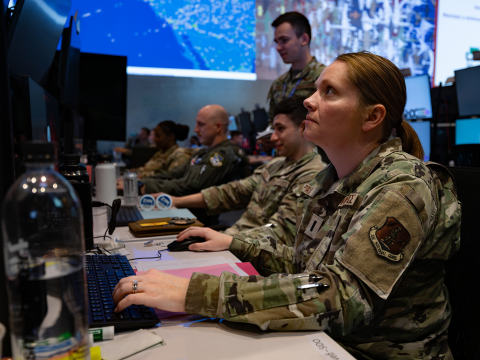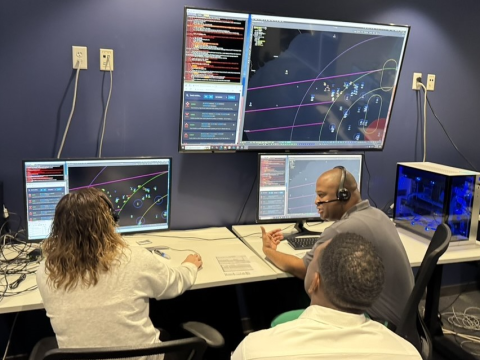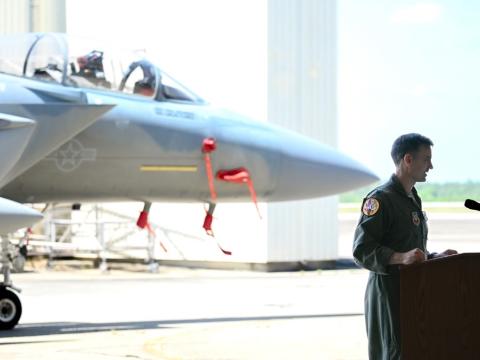Welcome to Drone-o-Rama
It really is the perfect weapon for a country of couch potatoes. Grab the remote, point, click and “boom,” there goes some hapless al-Qaida bigwig, blown to smithereens in living color. It is like playing “Call of Duty,” but with real ammo.
It really is the perfect weapon for a country of couch potatoes. Grab the remote, point, click and “boom,” there goes some hapless al-Qaida bigwig, blown to smithereens in living color. It is like playing “Call of Duty,” but with real ammo. That’s what smart operators can do with an MQ-1 Predator (as in “Apex”) or an MQ-9 Reaper (as in “Grim”). The bad guys never see them coming. Yes, for the United States, this truly is the day of the drone.
As exemplars of standoff warfare—sending a weapon, not a person—drones are popular with our citizens and feared by our opponents. What’s not to like? Well, the military does not like the term “drone.” The crew in the Pentagon basement has generated alternatives, including “remotely piloted aircraft” (RPA), “unmanned aerial vehicle” (UAV) and “unmanned aircraft system” (UAS), among others. But average Americans do not care much for the latest round of buzzwords and acronyms. The craft were introduced as drones; they tend to make engine noises along those lines; and thus drones they shall ever be.
Not too many years ago, presidents facing a crisis asked, “Where are the carriers?” That remains a very good question well worth raising when events go haywire overseas. Yet soon enough, those carriers may be catapulting unmanned, bat-winged X-47Bs into the fray. Already today we hear of the arrival of Predators and Reapers over embattled lands such as Iraq, Libya, Somalia and Yemen. It all causes our elected leaders, our military commanders and the public to breathe easier. The drones have flown and the situation is well in hand.
You would think from news coverage that every other U.S. warplane is a drone. We do have a lot, but even so, they still constitute but a tiny fraction—less than 5 percent—of the aircraft in our arsenal. Leave aside the equivalent of flying binoculars, those hundreds of little handheld Ravens and their ilk found in every 100-soldier company, battery and troop. When people talk about the big ones—the kind that can stay up for hours, see far and wide, and deliver death—the contingent is limited. The U.S. Air Force flies just more than 250 Predators and Reapers. By comparison, the Air Force employs more than 300 A-10 Thunderbolt IIs. Drones receive a lot of media coverage, and they are very useful for certain discrete tasks. But the vast majority of U.S. airpower still has a man or woman aboard doing the work.
And that is the right approach. It definitely is expensive and risky to crew warplanes and send them into hostile airspace. But even the most sophisticated drones have yet to display the problem solving, teamwork and ingenuity demanded to defeat enemy aircraft or to press through to heavily defended targets. Drones do pretty well against disorganized foes armed with AK-47s; their prowess against real air defenses remains to be seen. Send drones to hit the critical Ploesti oil refineries in 1943, central Hanoi in 1972 or downtown Baghdad in 1991, and the computers would turn back, having crunched the numbers and ceded the skies to the German Luftwaffe, the North Vietnamese gunners or the Iraqi missile batteries. For those actual missions, the pilots worked together and figured it out. They also knew, painful as it can be, that sometimes a country has to pay a high price to impose its will on the opposition. That cannot be programmed—not yet, and probably not ever. As the saying goes, that does not compute.
We have been here before. In the Atomic Age, Jet Age, Computer Age world of 1953, the really smart people all knew that wars were supposed to be run—and won—by people in climate-controlled rooms with big brains, calculating demeanors and clean fingernails. Put in the right numbers, send out the proper electrons, and decisive victory would arrive like lightning from a clear blue sky. Yet somehow, even as the persuasive experts proposed, real enemies disposed, most particularly on the grubby, muddy ridgelines of the Korean War. The Chinese communists and North Koreans were cowed neither by nuclear deterrence theory nor by high-technology weaponry. They just took what they wanted, tried to hold it and hung on tenaciously under the bloody beating inflicted by frustrated Americans. Nuclear deterrents, high-flying jet aircraft and gleaming computers could not clean out bunkers or control the high ground. That brutal business demanded the old-school solution, familiar to Julius Caesar, the Duke of Wellington or Ulysses S. Grant: soldiers on foot with hand weapons. In the words of an exhausted lieutenant in the movie Pork Chop Hill, “Where’s all this push-button warfare we’ve been hearing about?” His company commander knew. “We’re the push buttons.” Indeed.
Push all the buttons you want. In the end, though, all anyone can do with a drone is kill and wreck and then stare at the mess they have made. If anyone wants to take ground and keep it, that requires people with hand weapons. And to get them there and keep them there, the air above them must be controlled with enough guts and savvy to finish off determined enemies up in the central blue. By all means, buy drones, as good and as many as can be obtained. But make doubly sure to obtain and retain smart, tough people with the skill and will to press the fight, not just a button.
Lt. Gen. Daniel P. Bolger, USA (Ret.), is a former troop commander in Iraq and Afghanistan. The author of seven books and numerous articles, he currently teaches at North Carolina State University.




Comments